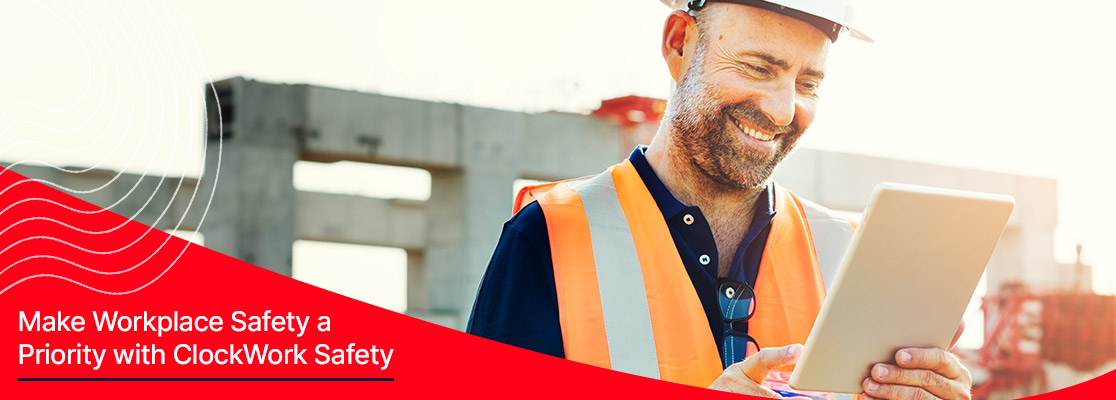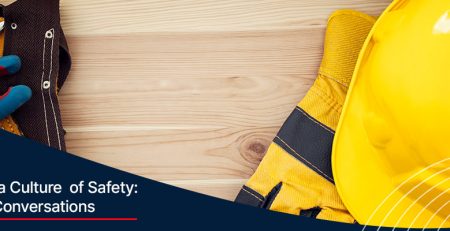How do I make workplace safety a priority?
Safety should always be a top priority in the workplace. According to the Bureau of Labor Statistics, there were around 4,764 deaths last year as a result of workplace injuries. That’s why it’s so important to ensure that your workplace is as safe as possible.
Making Safety a top priority in the workplace.
Improving workplace safety isn’t only the right thing to do; it’s also a sound investment in a company’s future. Businesses that pay attention to occupational safety are more likely to succeed. And exceptional health and safety training is where you’ll find out how important it is to make safety a top priority.
So, how can you make workplace safety a priority? Here are a few tips:
- Make sure your employees are properly trained on safety procedures.
- Conduct regular safety audits to identify potential hazards.
- Encourage employees to report any unsafe conditions or practices.
- Create a safety culture
Make sure your employees are properly trained on safety procedures.
The National Safety Council advises conducting a job hazards analysis, which documents each stage of on-the-job activities and the possible safety concerns that may arise from each activity. This study identifies the most hazardous tasks, allowing companies to focus their immediate safety training efforts.
Once you know which are your company’s most hazardous tasks, you can then target your training to address those topics. It sounds easy enough, but getting the training in front of your employees can be a struggle in itself.
The goal of training is to change workers’ actions. All personnel, especially new ones, should be educated on safety issues. It ensures that employees are aware of the dangers of their job and how to do them safely. It’s important to provide training on a regular basis for employees of all skill levels and to create a training schedule to assist with those efforts.
Hiring occupational safety and health experts to provide training is a wonderful method to get your staff educated, but it isn’t always within the budget for small companies. This is where you might use training software like ClockWork Safety. ClockWork safety lets you assign training to your workers on anything from general OSHA Mandated topics to your company’s specific procedures. You can create your own training courses or select them from our training library.
Conducting regular safety audits
Safety audits are another way to ensure that your workplace is as safe as possible. These audits can be conducted by a third-party safety consultant or by someone within your company who has been trained in how to identify potential hazards.
A safety audit is a methodical, structured examination of how workplace activities impact employee safety and health. It allows businesses to assess the effectiveness of their safety and health programs, as well as environmental initiatives.
The purpose of a safety audit is to find and fix hazards before they cause injuries, illnesses, or property damage. By identifying potential problems and addressing them quickly, businesses can prevent accidents and save lives.
There are many different types of safety audits, but they all have one common goal: to improve workplace safety. Some audits focus on specific topics, such as electrical safety or ergonomics. Others are more general in nature and examine a wide range of safety and health concerns.
No matter what type of audit you choose, the goal is always the same: to make your workplace safer for everyone. OSHA recommends conducting a safety audit at least once a year.
These audits should be conducted by someone who is not responsible for the day-to-day operations of the workplace, such as a safety consultant. This allows for an objective assessment of the workplace and can help identify potential hazards that might otherwise be missed.
One of the best ways to make sure your workplace is safe is to encourage employees to speak up if they see something that isn’t right.
Whether it’s an unsafe condition, such as a loose stair rail, or an unsafe practice, such as someone not wearing proper safety gear, employees should feel empowered to speak up.
You can further promote this behavior by rewarding your employees for reporting potential safety hazards. This creates value for the employee to take the time to actually report things that they see on the job site that could be potential hazards.
Another way to get employees to report potential hazards is to make them easier to report. By using an app like ClockWork Safety. ClockWork safety allows your employees to snap pictures of potential safety hazards and easily report them. All of this just by using a piece of equipment they already carry, their phone.
You can also implement features like forms and checklists to be completed on clock out where you ask your employees if they saw any unsafe situations or damaged equipment during their shifts.
ClockWork Safety’s platform and app make it easy to create safety forms and checklists. You can use these to track hazards in your workplace and ensure that they are being addressed. ClockWork Safety also offers training courses that can help you learn more about workplace safety. By using ClockWork Safety’s platform, you can make sure that your workplace is a safe place for everyone.
Creating a safety culture
One of the most important things you can do to make workplace safety a priority is to create a safety culture. Safety culture is an environment in which employees are encouraged to prioritize safety and take ownership of their own well-being and the well-being of their coworkers. A strong safety culture starts with leadership.
Creating a safety culture starts at the top of an organization. If company leaders are not committed to safety, it will be difficult to create a culture of safety in the workplace.
Leaders need to set the example by following all safety procedures themselves and holding employees accountable for their actions. Leaders also need to provide employees with the resources they need to stay safe on the job.
Assuming that staff has all the training they require is a hazardous assumption. Managers and other leaders should contact department heads, foremen, and other supervisors to see whether workers are putting what they’ve learned into practice. When a worker performs an operation in an unsafe manner, immediate coaching or retraining should take place. In-the-moment assistance is far more successful than after-the-fact assistance.
Create Safety Committees
The following benefits can be gained by a successful safety committee: increased safety awareness, rapid response to safety concerns, cooperation between employees and management in the identification of hazards, and a decreased workers’ compensation insurance premium.
On sites or within plants, safety committees are run by employees rather than managers. They become resources for their coworkers when it comes to safety concerns and may also report problems, such as faulty equipment operation before they result in accidents. Because they’re closest to the action, they become critical eyes and ears when it comes to safety concerns.
Keep the following things in mind when forming a safety committee
The makeup of a safety committee might vary depending on the demands, size, and sort of company.
- Make a selection as to who will be in charge. This individual must have leadership skills such as organization, dedication, extensive company knowledge, and peer respect. They will function as the committee leader and chairperson.
- Diverse membership: The committee should include an equal number of management and non-management workers from all sections of the business. Limiting the size of the committee will ensure that meetings move forward while also allowing each person to contribute. Depending on the size of your company, 4- 10 members should do it. These people should have a solid team spirit, understand company procedures and safety risks, and be able to implement change within the company’s safety program.
- Meetings should be held at least once a month and be no longer than one hour. Limiting meetings to one hour keeps everything moving forward. It also limits the number of times workers must be away from their regular job responsibilities.
- Document the committee’s activities: The secretary of the committee should keep a written record of the meeting’s proceedings. Each meeting should be reviewed, as well as any follow-up actions taken, from the previous month’s meeting minutes. Minutes of meetings should be distributed to all members, published for all business staff to read, and sent to key management people. The committee’s efforts will receive the greatest benefit if they are made public.
- Create action items from your meetings to address potential hazards. After potential safety concerns have been brought to light by your safety committee, follow through on the corrections. This will ensure that the committee is taken seriously by employees, management, and other key stakeholders.
When it comes to making workplace safety a priority, there are many things you can do. By implementing ClockWork Safety’s platform, you can make sure that your workplace is a safe place for everyone.
If company leaders are not committed to safety, it will be difficult to create a culture of safety. However, when leadership is committed to safety, it will filter down through the ranks and create a workplace where safety is a priority for everyone. To learn more about how to create a safety culture check out our blog article, here.
Making workplace safety a priority doesn’t have to be difficult. By following some simple steps, you can make sure your workplace is as safe as possible. OSHA compliance, regular safety audits, encouraging employees to report potential hazards, and creating a safety culture are all great ways to make workplace safety a priority. What steps will you take to make workplace safety a priority in your workplace?
If you would like to learn more about ClockWork Safety and how we can help you create a culture of safety in your workplace, please visit our website or contact support@cloclworksafety.com!



